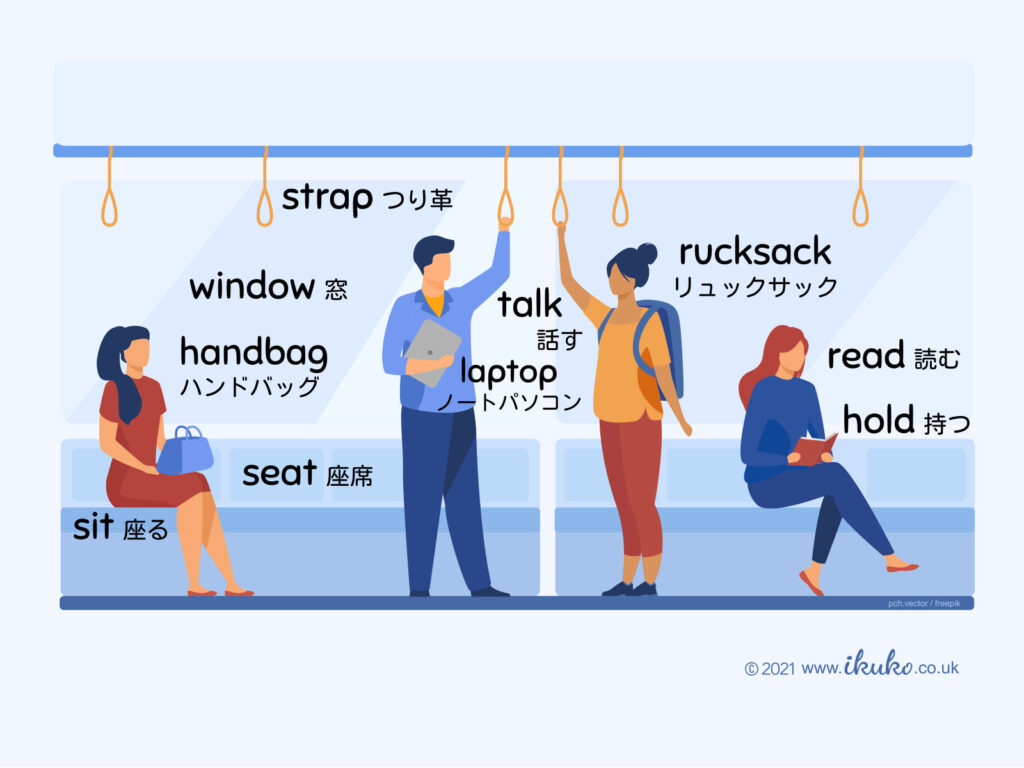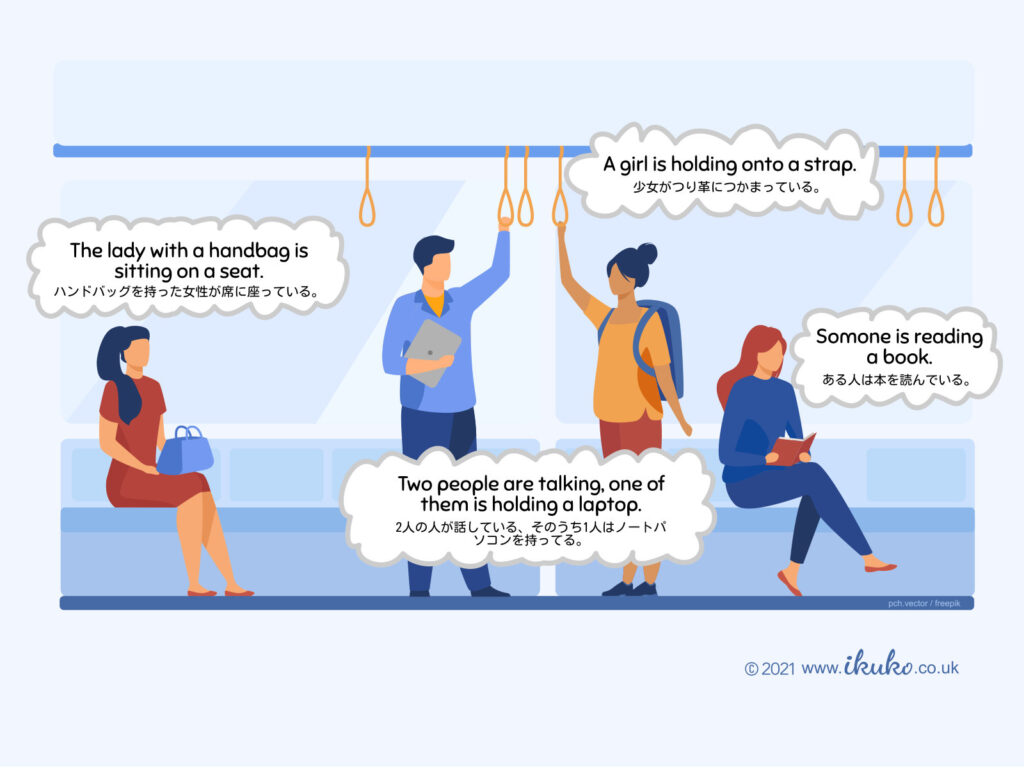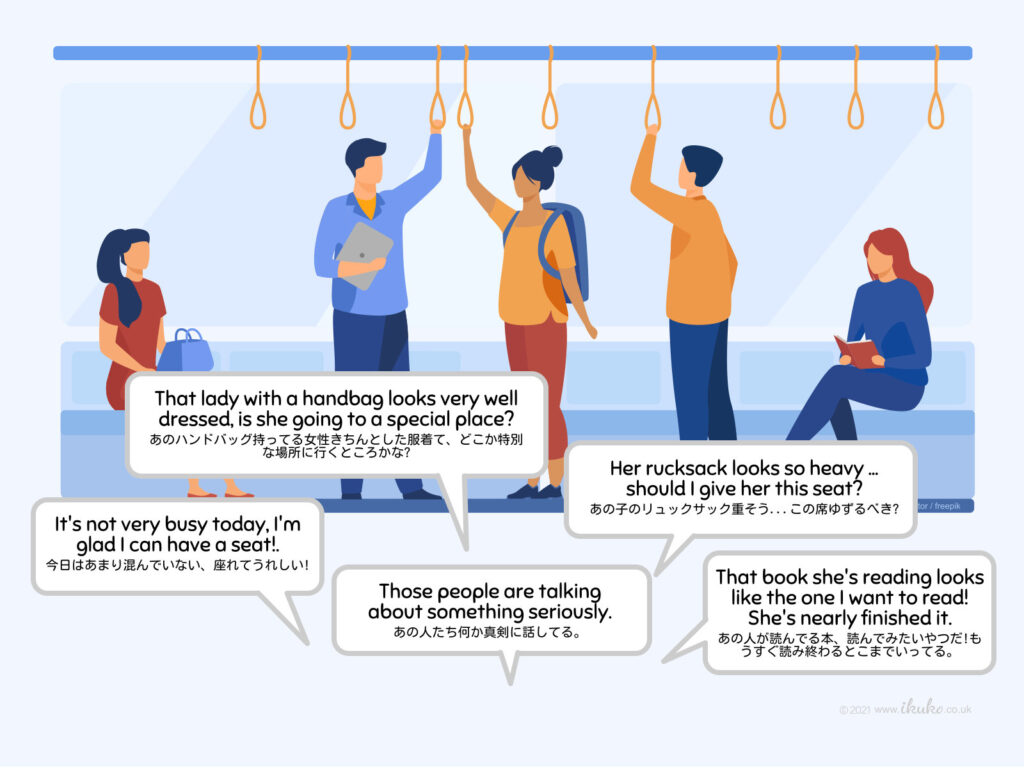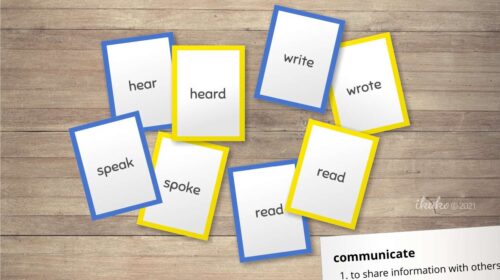
Visual aids in Life 🖼 身近な視覚教材
Have you ever found it difficult to explain in English what happened that day?
Many conversations consist of what we see or hear in life, and expressions required are often simple!
So why do words not come out??
It might be to do with the way your speaking skill is trained.
その日にあったことを英語で説明するの難しいな、と感じられたことおありですか?
会話では日ごろ見聞きすることがよく登場し、使われる表現もわりと簡単ですね!
ではなぜ言葉が出てこないんでしょう??
話す力の鍛え方が関係しているかもしれません。
Using text is one of the most common and effective ways of learning a language.
The only thing is, reading is obviously different from speaking!
So if you’re good at reading but struggling to speak, one idea is to switch over to using visual aids.
文字を使うのは言語を学ぶのに最も一般的で効果的な方法の1つです。
とは言っても、読むことと話すことは当然違いますよね!
なのでもし読むのは得意だけど話せないという方は、視覚教材を試してみられるのがおすすめです。

Visual aids here mainly refer to images, pictures or scenes that help practise describing a situation.
Some of the advantages of using visual aids are …
- they enable us to practise various scenes
- the information process required resembles that of when we speak in daily life
- they help us find and strengthen vocabulary and grammar areas to suit individual needs
ここで言う視覚教材とは、状況描写の練習に使う絵や写真、情景のことです。
視覚教材を使うことの利点のいくつかにはこんなことがあります。
- いろいろな場面を練習できる
- 情報処理の仕方が普段会話する時と似ている
- 個々の必要に合った語彙や文法分野を見つけ強化できる
With images below, I’d like to show an example of using a daily life scene as a visual aid.
You can maybe start off by following these 3 steps.
例えば日常の場面を視覚教材としてどんなふうに使えるかを絵で見てみましょう。
最初はこんな手順に沿って始められるかもしれません。
❶ Identify all the keywords such as nouns and verbs. Take a note of words you’re not sure of to look up later.
名詞や動詞などポイントとなる語彙をひと通り確認、分からない場合は後で調べられるようにメモなどするとより効果的。

❷ Decide the tense or grammar you’re practising and stick to one at a time.
練習する時制や文法を決め、1つずつ集中的に練習する。

❸ Once different grammar rules are clear in your mind, try mixing them as in normal conversations by narrating what you see or relating what’s on your mind.
3 いくつかの文法事項が頭の中で明確になったら、絵の情景を描写したり自分が思うことを述べたりして普段の会話のように文法を混ぜる。

❕ It’s important that you actually speak rather than just think in your head! Of course being considerate of others when practising in public places matters too 😉
頭の中で終わらせず声に出して練習することが大切です!もちろん公共の場で練習する時は周りに配慮したいですね✨
The same 3 steps apply whether we’re using an image, photo or real scene.
It might take some time before the words start to come out as you intend to.
If you ever feel discouraged, remember it’s very different from mastering your native language which is everywhere around you.
You’re doing well to try!!
Another challenge with improving conversation skills might be that it’s hard to tell whether we’re making any progress.
It’ll be discussed in a future post 👋
絵、写真、実際の情景のどれを使っても基本の3点は当てはまります。
思うように言葉が出てくるようになるまでには時間がかかるかもしれません。
くじけそうになることがあったら、周りで話されている母国語のようにいかなくても当然ということを思い出してくださいね。
努力自体が頑張っていることの証です!!
ところで会話力の向上には上達の度合いが分かりにくいという悩みも付き物かなと思います。
いずれその点についてもお話しできたら思っています🤗
be to do with … …と関係がある
to relate to (something) : to be about (something)
https://www.merriam-webster.com/dictionary/be%20to%20do%20with

White photo frame Frame psd created by rawpixel.com – www.freepik.com
Train image People vector created by pch.vector – www.freepik.com






